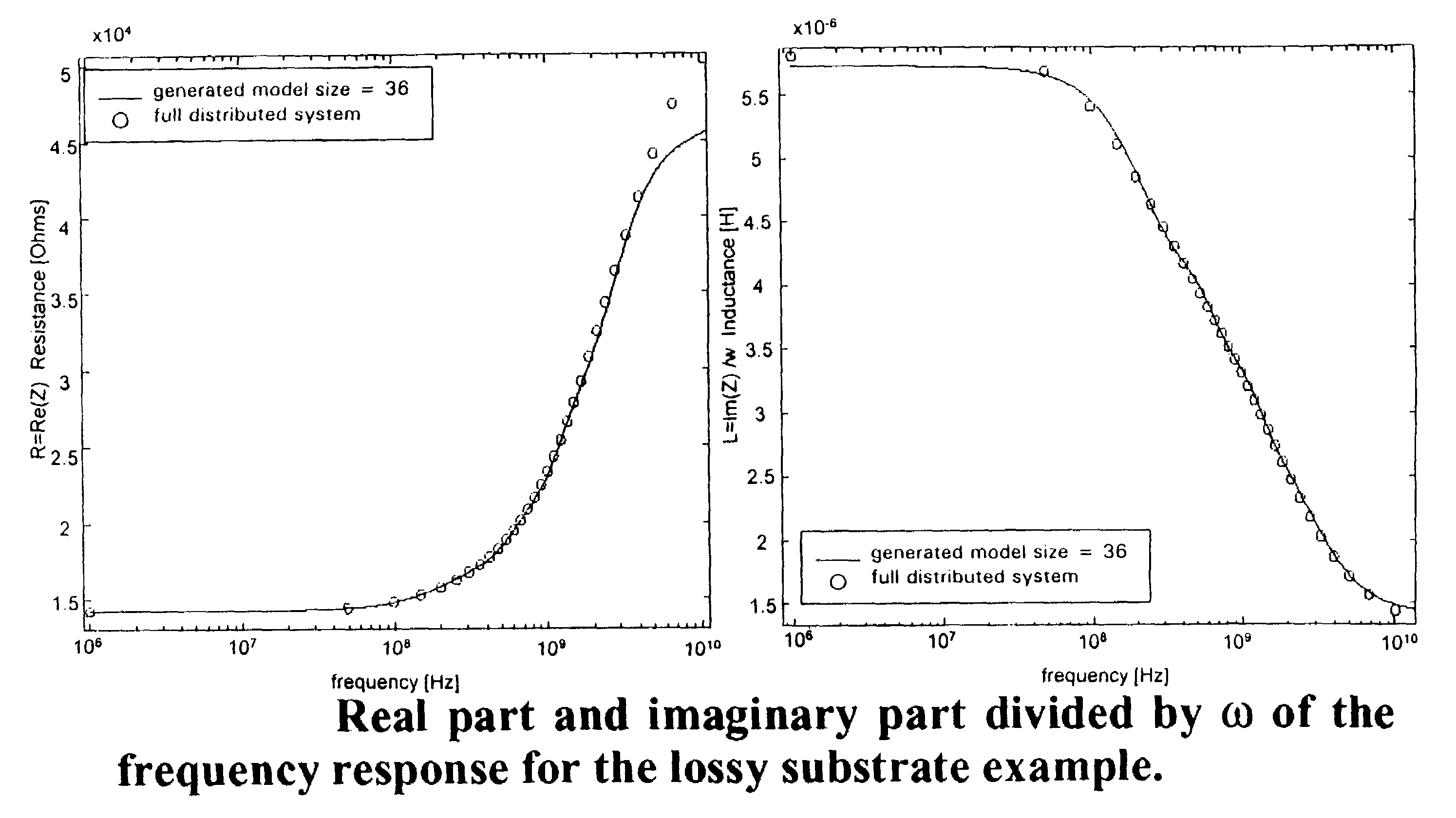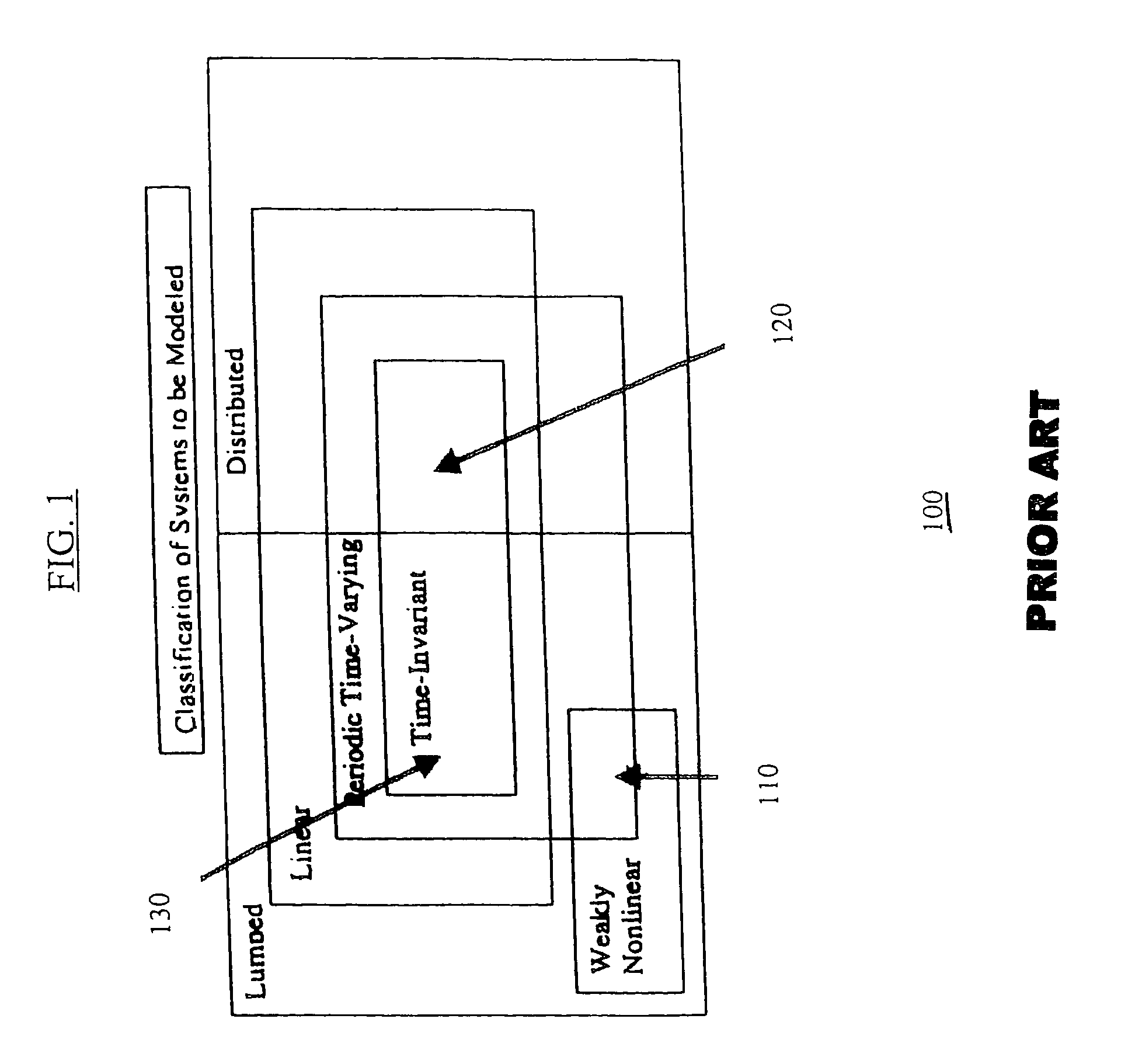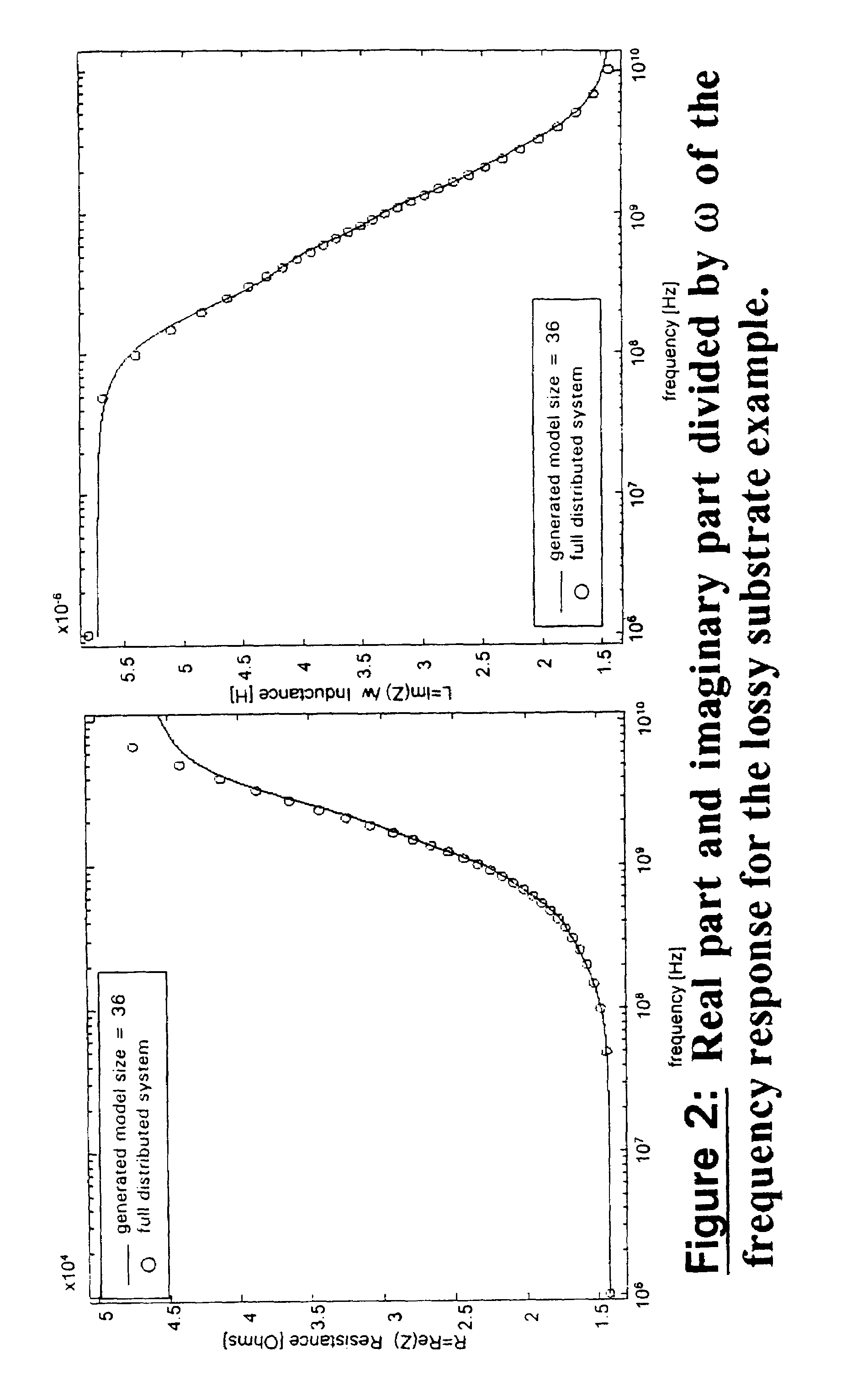Method and system for modeling distributed time invariant systems
a distributed time invariant and model technology, applied in the field of model behavior of distributed time invariant systems, can solve the problems of high physical fidelity, cumbersome and not really practical, and prevent the reliable computation of high-order models, and achieve the effect of convenient programming implementation
- Summary
- Abstract
- Description
- Claims
- Application Information
AI Technical Summary
Benefits of technology
Problems solved by technology
Method used
Image
Examples
example 1
[0057]Consider the one port (p=1) network function Zskin(iω)=R0+Rac√{square root over (|ω|)} that is commonly used as a model for the “resistance” of interconnect in the skin-effect regime. This function satisfies the condition ΠZ(iω)>0, ∪ωΔR. However, it is not a representation of any passive system, because it is not a causal function. In fact, it can be shown that any physical, passive network function that is purely real must be constant with respect to the frequency ω.
[0058]Algorithms that generate successively better rational approximations of non-causal systems (for example, Zskin(iω)) fail in some limit to be passive, for example by generating unstable approximants. Therefore we will utilize systems that are causal. The processes and methods of the present invention produce strictly positive-real (and thus strictly passive) approximations to causal and strictly positive-real (and thus strictly passive) system functions H(s).
[0059]Distributed Systems in Descriptor Form. Let u...
PUM
 Login to View More
Login to View More Abstract
Description
Claims
Application Information
 Login to View More
Login to View More - R&D
- Intellectual Property
- Life Sciences
- Materials
- Tech Scout
- Unparalleled Data Quality
- Higher Quality Content
- 60% Fewer Hallucinations
Browse by: Latest US Patents, China's latest patents, Technical Efficacy Thesaurus, Application Domain, Technology Topic, Popular Technical Reports.
© 2025 PatSnap. All rights reserved.Legal|Privacy policy|Modern Slavery Act Transparency Statement|Sitemap|About US| Contact US: help@patsnap.com



